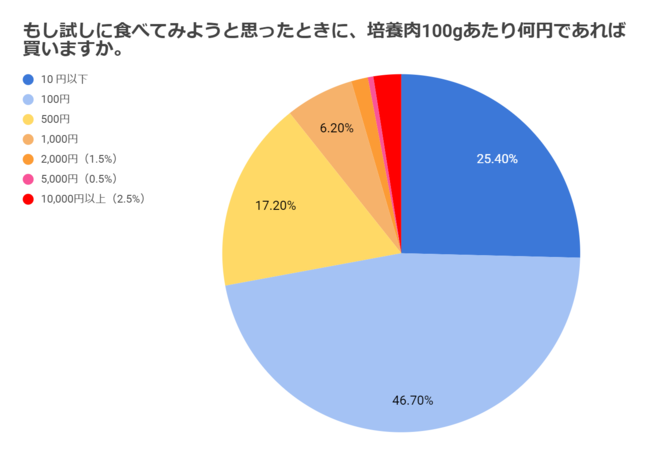The specified nonprofit corporation Cellular Agriculture Institute of the Commons (Board chairman: Keisuke Igarashi, hereinafter referred to as “CAIC”) conducted an “Awareness Survey on Cellular Agriculture and Cultured Meat” targeting 1,000 male and female consumers nationwide. This survey was conducted to find out the level of awareness and acceptance of Cellular Agriculture (Cell Ag), which is being researched and developed as a next-generation food option. The survey will be conducted every six months to see how the level of awareness and acceptance changes. The next survey is scheduled to be conducted in June 2021. This survey was conducted as a part of activities for the “Cellular Agriculture CC (Community Circle)”, Council for Public-private Partnership in Food Technology.

- Cellular agriculture (Cell Ag) is a production method in which products traditionally obtained from individual animals, such as livestock and marine resources, are harvested by cultivating specific cells.
- In order to establish a more sustainable and efficient method of food production, more than 100 companies in 23 countries around the world are working on the development of technology for food production based on cell culture. Development is underway for a variety of food ingredients including so-called “meat” such as beef, pork, and chicken that we usually see on our tables and “seafood” such as salmon, tuna, and shrimp, as well as foie gras and sturgeon, which are considered high-grade food ingredients.
- Although it is not yet on the market in Japan, cultured chicken from Eat Just was approved for sale in Singapore last December, and it is expected that the product will be commercialized and marketed worldwide as regulations are established.
About 40% of Japanese people know about “cultured meat”
From the results of the questionnaire for all age groups, 19.1% of the respondents knew about “cellular agriculture” and 39.1% knew about “cultured meat.” Also, the results show that with regard to cellular agriculture, the age group with the highest percentage of respondents answering “Yes, I know” was the 20s (32.5%). There was no difference among the other age groups.
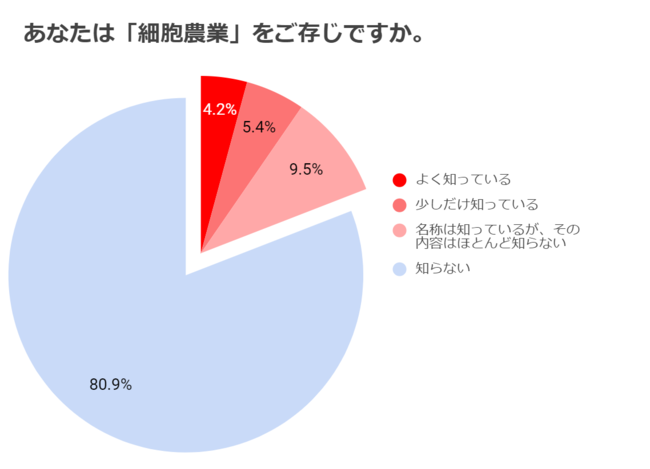
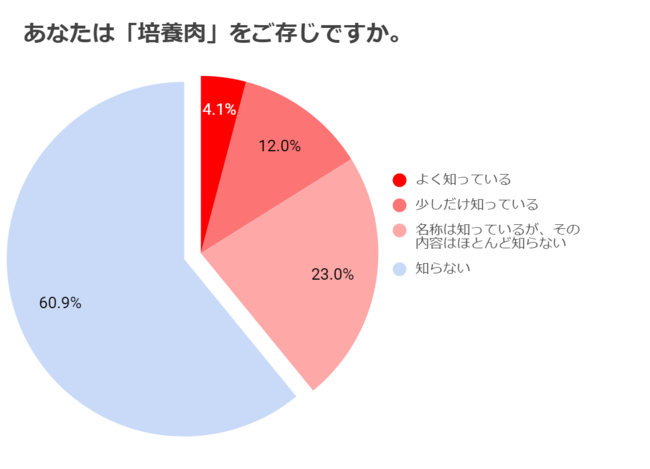
High expectations concerning taste and safety concerns
When asked about expectations for cellular agriculture and cultured meat, the top responses were “delicious taste” (38.9%), “preventing food crises” (27.9%), and “low prices” (27.2%). On the other hand, the top concerns were “uncertain whether food safety can be guaranteed” (37.9%), “whether it will taste good or not” (34.8%), and “not knowing what is in it” (29.3%). In any case, the results show that there was a strong interest in taste.
When asked about the image that comes to mind regarding cultured meat, the most common answer was “I don't know enough (about cultured meat), so I have no idea” (50%), followed by “I have concerns about the unknown” (30%). There were also favorable responses such as “it seems good for and friendly in terms of the environment and animals” (20%). In addition, several opinions indicated that “the name ‘cultured meat’ is not good.”
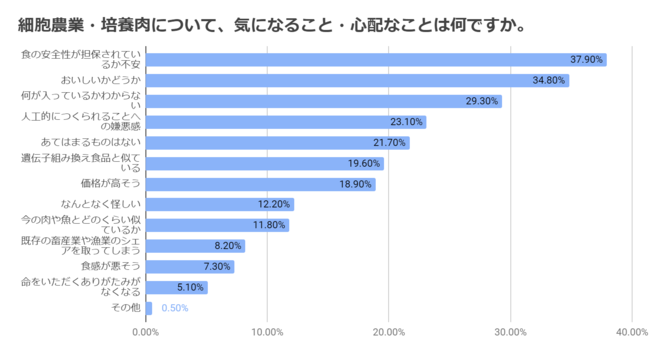
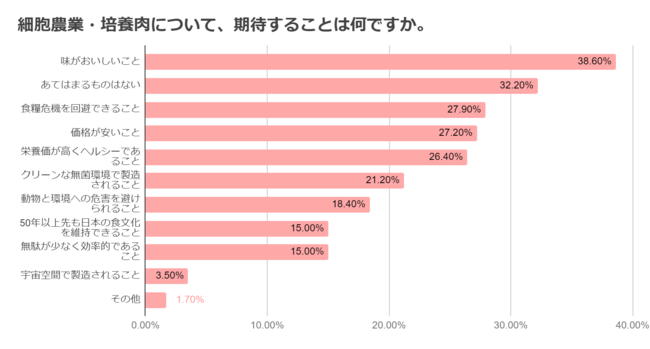
About 30% of respondents would like to try cultured meat even if it costs more than ordinary meat.
When asked, “If you were to try cultured meat, what price would you pay per 100g of meat?”, we found that more than a quarter (27.9%) of respondents were willing to buy cultured meat for a price higher than that of meat sold commercially at the moment.
